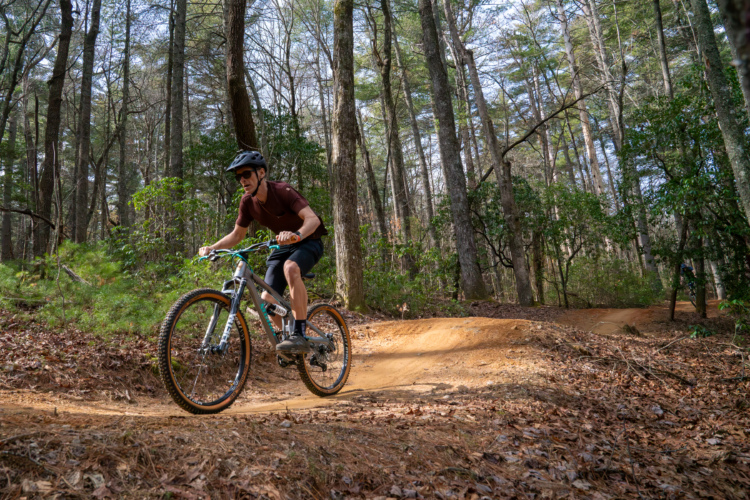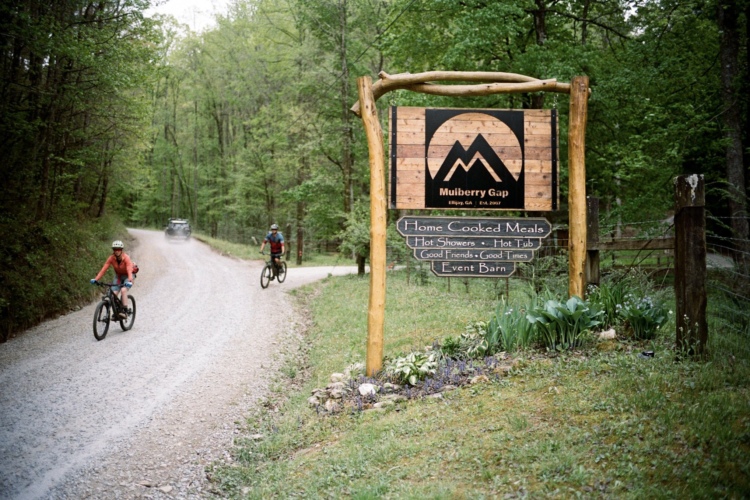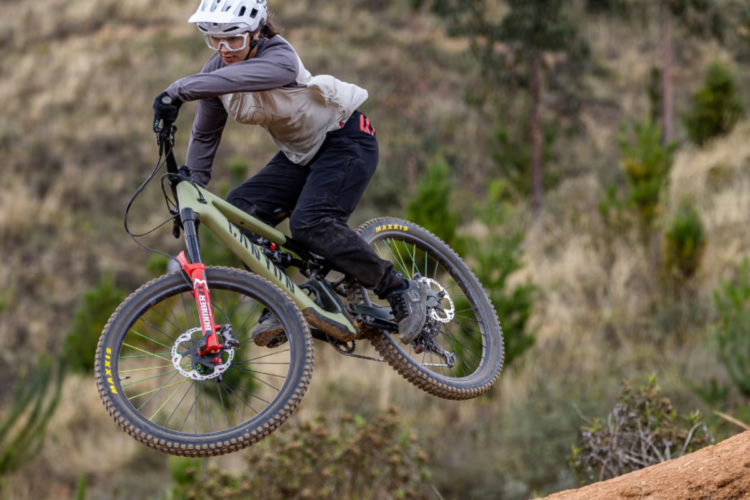This is part two of my interview with Joe Breeze and JT Burke (Breezer Brand Manager) about the new Repack full suspension trail bike with MLink. I got a chance to take the Repack on a brief test ride at Bootleg Canyon, and my impressions follow our conversation below.
Joe Breeze: The Sotto design group [is the company that did the] Yeti Switch. David Earle and Luke Beale–they’ve been in this business as long as anyone and they approached us 3 or 4 years ago and wanted to do a Breezer full suspension bike. David Earle has been a Breezer fan for quite some time and he had some ideas they wanted to try and they had just done that Yeti bike […]. There are some disadvantages of the short link and some disadvantages with the rear link.
JT Burke: So MLink stands for mid-link and it has to do with the important chainstay pivot being in the middle of the chainstay. When the first chainstay pivot bikes came out they were, the Horst link bikes were kind of a revelation because […] you were able to manipulate chainstay length so it improved the ride a lot. And then they thought well shoot, go all the way forward and then you can go hog wild and really change the chainstay length. You can have it accelerating through certain parts of the travel and decelerating through others
JB: And make the rear triangle more rigid too.
JT: Exactly. One of the disadvantages of a Horst link is you cannot connect it. So when that pivot is here (pointing near the axle), those pieces move independently so you can’t connect them for a rigid rear triangle. So the further forward you move this pivot, you can place it upright and go right down to it. So with a short link with a pivot here (pointing between middle of chainstay and bottom bracket), you can place the upright even more and get the perfect triangle. So there were some advantages there but the things they didn’t realize until after basically 2 years of riding the shorts links–they move faster at a larger distance for the same amount of wheel travel as a long wing. Picture this pivot right here (the mid-stay pivot) is actually moving about 3 degrees for 160mm of travel so it’s moving very little. And then if you go all the way back, that bearing has to move a further amount plus it’s accelerating a lot faster. So this is moving a much smaller amount.
So eventually through ride testing they saw some of the issues that come with that. … You’re seeing super short links now like [on the] Yeti Switch system [and] the new Ibis Ripley … [there are] two eccentrics so there are some advantages in design for the super short ones. But then picture your two links are super short, you’ve got a 29 inch wheel back there, that’s a lot of leverage on this little tiny link. It’s hard on those, it’s hard to keep them from flexing and it affects how the suspension works.
So by balancing this out we call it the best of both worlds. You’ve got a fixed, rigid rear triangle which is really great for climbing, for adding more rigidity, keeping the suspension working like you want it to work. But by placing this pivot further forward from a Horst link we are able to manipulate the chainstay lengthening effect throughout the travel and get exactly what we want. Which is how we got this bike to be such a good climbing bike. It’s also why you see a lot of Horst link bikes have to have lockouts or the Brain system because they don’t really climb well on their own.
It turned out even better than we expected in the real world when you’re riding it. A lot of that has to do with what we’re doing for pivot hardware and the bearings we’re using. This is actually a thru-axle so it’s a hollow aluminum axle and it’s a 15mm axle just like your front wheel.
Jeff: Are there any advantages to doing this in terms of standards?
Well, there isn’t really a standard yet for pivots but there is a reason Shimano codesigned that with Fox at that diameter because it’s kinda balancing out weight and stiffness. 20mm would be stiffer but you pay a weight penalty.
Tighten that [pivot hardware] down so that it’s a compressive load but then it’s actually a collar system over here so that this is then a tapered washer. As you tighten down the fastener it expands the collar out so you’ve got an [axial and radial] load. That collar system is so rigid it really makes that suspension work just like you’re designing it. And we’re not seeing anybody doing this.
JB: Patents go through this whole region here. (pointing at the rear suspension linkages)
JT: There are no other M-link bikes on the market except for Breezers.
Jeff: Are you going to patent it, can you patent it?
JB: Oh yeah, it already is. That’s ours.
Test ride
 The Repack demo models were in high demand at Interbike as this is Breezer’s first full-suspension mountain bike. And the company didn’t just dip its toe into the full-suspension waters with a cross-country rig; this is a full-on trail / all-mountain bike with 160mm of travel and tweener 650b wheels. Talk about making a splash!
The Repack demo models were in high demand at Interbike as this is Breezer’s first full-suspension mountain bike. And the company didn’t just dip its toe into the full-suspension waters with a cross-country rig; this is a full-on trail / all-mountain bike with 160mm of travel and tweener 650b wheels. Talk about making a splash!
On the trail the Repack climbs better than almost any full suspension mountain bike I’ve ridden–and that includes my Santa Cruz Tallboy 29er with 100mm of travel. The steep head angle (68-degrees) means this bike is more than capable of going uphill. I suspect the improved linkage connections help here too, removing some of the side-to-side flex many full suspension designs suffer from when pedaling out of the saddle. Stiff isn’t a term I would use to describe other trail bikes I’ve ridden (aside from maybe Specialized bikes) but I think it’s appropriate here. As an enduro race bike I suspect the Repack will do well.
Going downhill the Repack performed well and provided excellent control through the chatter. Honestly I didn’t feel like I quite got 160mm of travel out of the bike but that could be due to not having the shock completely dialed in. (I did work with Breezer to get sag set correctly before my demo but there’s always room to tweak.)
I’m fiercely loyal to 29ers for mountain biking but in testing the Repack, I honestly didn’t miss my big wheels. The 27.5 inch wheels are the right choice here and balance nicely with the overall geometry. I’ve tested a few 29er “trail” bikes and honestly the Repack blows all of them away, so I may need to rethink my loyalties…
More details online at the Breezer Repack microsite.












